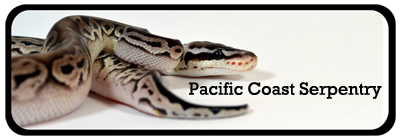Live rats are totally safe if fed responsibly. There are pros and cons to both live and f/t. F/T can be equally dangerous if done incorrectly.
For live, feed small and more frequent rather than large and less often.
Adult rats are dangerous and can injure, even kill, a snake.
Weanlings and small rats are harmless and don't have the mental capacity to understand that snakes are dangerous. An adult rat will identify danger in a snake and will fight back. Plus weaned and small rats don't pack the same bite force as a full grown adult.
And make sure that the feeder is calm, well fed, and hydrated before putting it in with a snake. A hungry rat is more likely to eat the only other thing in the tub (the snake).
A well fed and hydrated feeder is more likely to be more relaxed as well. And whatever you do, do not dangle a feeder. They will freak out. Scared animals are dangerous.
And do not leave a feeder unattended for longer than 30 minutes max. Take it out and save the feeder for the next feeding.
These rules apply more to small rats and larger.
Nope. I didn't take any offense. No worries. I hope you didn't either.About the rat thing, there is a lot of different opinions; it is a controversial topic. Also, if you look at the actual nutritional information, rats have (more than just a few percentiles for some of it) higher protein, more fat content, and more calories (I guess it is how you look at it). My reptile veterinarian told me rats too.
I really hope I haven't offended anyone, and I understand that everyone has their own view. Honestly, I'm fine with some people preferring mice, and I believe that they thinks it great and they have proof to back their methods. I'm glad they found something that works for them.
And it's not that some people prefer mice. I bet most (if not everyone) would rather feed their balls rats. But it's not up to the humans. It's up to the snake. As a species well known to be picky eaters, some ball pythons will never take rats. They simply just refuse. Its just like how some ball pythons are addicted to ASFs and will turn their noses to everything else.
I have looked at the side by side nutritional value of rats and mice. And there have been many topics here regarding such comparisons. The findings are nearly identical. I'm an animal biologist who works in a laboratory. I handle mice and rats daily. I also breed my own feeders.
I agree with vets who say feed rats. But it's more of a convenience factor than higher nutritional value. Like I mentioned, it's just easier to feed one rat compared to multiple mice.
All in all, the calorie intake and protein are very similar. The fat in rats are slightly higher.
Nutrient Composition of Whole Vertebrate Prey by RodentPro:
Adult mice (>10g)
- Kcal/g =5.25
- Crude protein % = 55.8
- Crude fat % =23.6
Rats (10-50g)
- kcal/g = 5.55
- Crude protein % = 56.1
- Crude fat % = 27.5
http://www.rodentpro.com/qpage_articles_03.asp
Whole prey according to the USDA(page 14 of their PDF provided below):
Adult mice (>10g)
- Kcalorie/g =5.77
- Crude protein % = 56.9
- Crude fat % = 23.5
Rats (10-50g)
- kcalorie/g = 5.67
- Crude protein % = 60.3
- Crude fat % = 26
http://www.nal.usda.gov/awic/zoo/Who...nal02May29.pdf
Additional data found on a non scientific source:
Adult mice (>10g)
- kcal/g = 5.25
- Crude protein % = 55.8
- Crude fat % = 23.6
Rats (10-50g)
-kcal/g =5.55
- crude protein % =56.1
- crude fat % = 27.5
http://www.leedspetshops.co.uk/nutri...snakes-page-69












 Reply With Quote
Reply With Quote